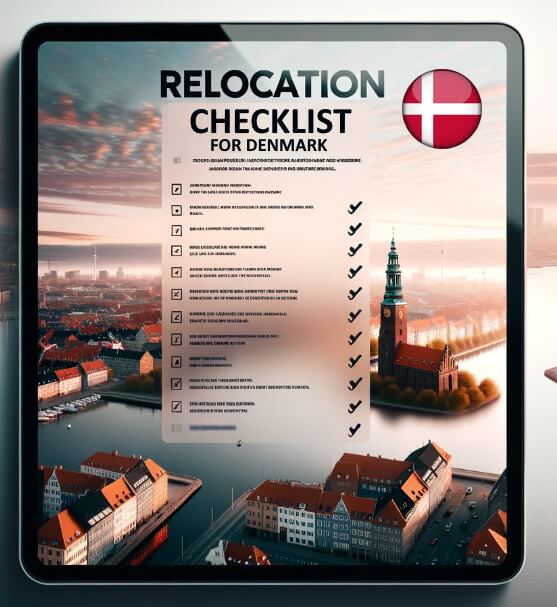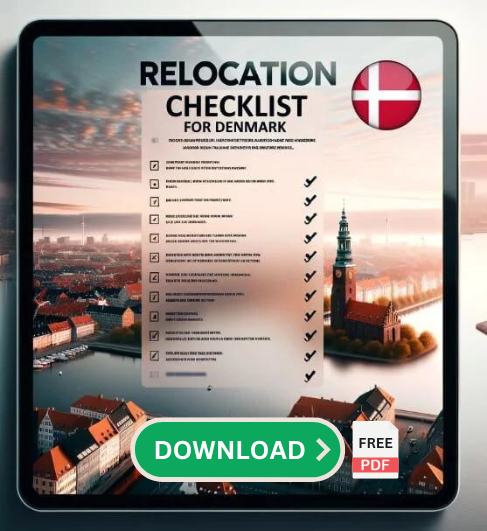As you settle in, whether as an expat, a student, or a tourist, you'll likely find that having a local SIM card is an indispensable part of living in or visiting Denmark. Why, you might ask? Simply put, it makes communication easier, provides vital access to the internet, and can save you from exorbitant roaming charges.
We'll take you through the ins and outs of obtaining a SIM card in Denmark. We aim to provide practical and clear advice, designed to be easily understandable even if you don't speak Danish. From navigating the Danish mobile network, understanding the types of SIM cards available, to the top providers and their costs - we've got you covered.
Key Takeaways
- Denmark offers a variety of SIM card options for expats, tourists, and students.
- SIM cards can be purchased from physical stores, online, or upon arrival at the airport.
- Providers include YouSee, Telia, Telenor, LEBARA, and '3', each offering unique plans and prices.
- SIM cards costs vary based on the provider and the type of SIM card (prepaid or postpaid).
- Activating a SIM card is generally straightforward, with steps often outlined by the provider.
- Prepaid SIM cards can be topped up online, in-store, at ATMs, or set to auto top-up.
Top 5 SIM Card Providers in Denmark
Let's explore Denmark's top SIM card providers in more detail. Each provider offers a unique mix of coverage, cost, and customer service, and it's crucial to consider these factors in your decision.
LEBARA
💡 Tip: Lebara is the only prepaird SIM Card provider with a real English website.
![SIM Cards in Denmark [year] (Prepaid & Postpaid Options) 2 SIM Cards in Denmark [year] (Prepaid & Postpaid Options) 2](https://denmarkexpat.com/wp-content/uploads/2021/09/Lebara-Denmark-1024x661.jpg)
Lebara is a popular Mobile Virtual Network Operator (MVNO) not just in Denmark, but in several other countries as well. Founded in 2001, the company has made a name for itself in providing affordable and flexible mobile services, especially for international calls.
One of Lebara's major draws is its prepaid options. These no-contract plans allow customers to control their mobile expenditures effectively. The company also offers a variety of data packages to suit different types of internet users.

[adservice-comparison-feed feed=lebaradenmark]
If you're looking for a flexible, affordable, and user-friendly mobile service provider, especially if you plan to make regular international calls, Lebara could be an excellent choice for your needs in Denmark.
- Coverage: As an MVNO, Lebara uses the Telia and Telenor networks, providing quite extensive coverage.
- Costs: Lebara is known for its budget-friendly prepaid options and international call packages.
- Customer Service: English customer service is available, known for being responsive and helpful.
- Pros: Very affordable, especially for international calls.
- Cons: As it depends on other providers' infrastructure, service disruptions may occur, although they're rare.
YouSee
![SIM Cards in Denmark [year] (Prepaid & Postpaid Options) 3 YouSee Sim Kort](https://denmarkexpat.com/wp-content/uploads/2023/08/YouSee-Sim-Kort-1024x693.jpg)
Denmark's largest telecom provider, YouSee offers a range of prepaid and postpaid options, with a focus on comprehensive coverage and reliable service. Their prices might be a bit higher than some competitors, but many users find the extensive coverage and robust service worth the cost.
- Coverage: With the most extensive network coverage, YouSee is a strong contender if you plan on travelling outside major cities frequently.
- Costs: YouSee's plans can be a bit pricier, but they offer various packages to suit different needs.
- Customer Service: Known for their reliable service, YouSee has both English and Danish customer support.
- Pros: Extensive coverage, high-quality service.
- Cons: Higher cost compared to other providers.
Telia
![SIM Cards in Denmark [year] (Prepaid & Postpaid Options) 4 Telia Simkort](https://denmarkexpat.com/wp-content/uploads/2023/08/Telia-Simkort-1024x628.jpg)
Known for its competitive prices and good service, Telia is a popular choice among budget-conscious consumers. They offer a wide variety of plans, including some attractive options for heavy data users.
- Coverage: Telia offers comprehensive coverage, especially in urban areas.
- Costs: They provide competitive rates with a variety of plans to suit different budgets.
- Customer Service: Telia's customer service is generally well-regarded, and they offer English support.
- Pros: Good coverage, competitive prices.
- Cons: Coverage in rural areas may be slightly less robust than YouSee.
Telenor
![SIM Cards in Denmark [year] (Prepaid & Postpaid Options) 5 Telenor Simkort](https://denmarkexpat.com/wp-content/uploads/2023/08/Telenor-Simkort-1024x612.jpg)
Telenor is renowned for its excellent customer service and competitive rates. They provide various plans suitable for different needs, whether you need a basic call and text package or a data-heavy plan.
- Coverage: Telenor's coverage is quite extensive, slightly behind YouSee's.
- Costs: Telenor offers various packages, often at slightly lower costs than YouSee and Telia.
- Customer Service: Telenor's customer service is known to be helpful and supportive, with English speaking representatives.
- Pros: Good service at competitive rates.
- Cons: Coverage in some rural areas might be less reliable.
3
![SIM Cards in Denmark [year] (Prepaid & Postpaid Options) 6 3 mobil sim card](https://denmarkexpat.com/wp-content/uploads/2023/08/3-mobil-sim-card-1024x548.jpg)
The smallest of the four, '3', is a hit among younger audiences and students, thanks to its competitive data plans and innovative offers. If you're spending most of your time in urban areas, '3' is an excellent option with affordable prices and good service.
Each provider has its strengths and weaknesses, so consider your specific needs and preferences when choosing. Do you value extensive coverage or competitive pricing? Do you prioritize customer service or innovative data plans? Your answers will guide you towards the right provider for you.
- Coverage: '3' offers excellent coverage in Denmark's urban areas.
- Costs: Known for its competitive data plans, '3' is very popular among data-heavy users.
- Customer Service: '3' has a good reputation for customer service, with English support available.
- Pros: Excellent data plans, great for city dwellers.
- Cons: Coverage is less extensive in rural areas compared to other providers.
LycaMobile
![SIM Cards in Denmark [year] (Prepaid & Postpaid Options) 7 LycaMobile SIM Card plans](https://denmarkexpat.com/wp-content/uploads/2023/08/LycaMobile-SIM-Card-plans-1024x660.jpg)
Lycamobile, like Lebara, has positioned itself as a highly accessible and affordable option for those who make frequent international calls. This makes it another suitable option for expats, tourists, and students looking to stay in touch with their home countries while in Denmark.
- Coverage: Lycamobile is an MVNO operating on Telenor's network, so you can expect good coverage in both urban and rural areas, albeit not as extensive as TDC's.
- Costs: Lycamobile is often favored for its affordability, with a variety of budget-friendly prepaid plans. They also offer attractively priced international calling and data packages.
- Customer Service: Lycamobile's customer service is accessible and offers support in multiple languages, including English.
- Pros: Affordable plans, particularly for international calling and data usage.
- Cons: As with other MVNOs, there may be occasional service disruptions due to dependency on Telenor's network.
Understanding Denmark's Mobile Network
It's crucial to understand a bit about the mobile network infrastructure here in Denmark. This small, Scandinavian nation has one of the most advanced telecommunications systems in the world. It offers strong mobile network coverage across its urban and rural areas, ensuring you'll rarely find yourself without service.
Denmark has four main mobile network operators: YouSee, Telia, Telenor, and '3'. These providers are responsible for maintaining the mobile networks that keep Denmark connected. Let's have a quick overview of each:
- YouSee: YouSee is Denmark's largest telecom provider. They have a robust network that covers almost all areas of Denmark. If coverage is your top priority, YouSee may be an excellent choice.
- Telia: Telia is a Swedish-Danish company known for its competitive prices and good service. They provide a comprehensive coverage of the country, with a special emphasis on urban areas.
- Telenor: Another top player in the Danish market, Telenor is a Norwegian company that provides excellent service and competitive rates. Their coverage is quite extensive, though slightly less than YouSee's.
- '3': Despite being the smallest of the four, '3' is highly popular among younger audiences and students because of its very competitive data plans. Their coverage is concentrated in urban areas, making it a great option if you'll be spending most of your time in cities like Copenhagen or Aarhus.
These providers operate their own services and lease their infrastructure to several smaller virtual operators or MVNOs. These MVNOs often offer cheaper rates, but keep in mind that they depend on the infrastructure of the big four, which can affect their service quality and coverage.
Related: See your options for buying mobile phones in Denmark
How to Activate a SIM Card
Congratulations, you've made your choice and purchased a Danish SIM card! But before you start texting, calling, or browsing, there's one more step: activating your SIM card. Don't worry, it's usually quite straightforward. Here's a step-by-step guide:
- Insert the SIM Card: First, remove the SIM card from its packaging and insert it into your phone. Make sure your phone is compatible with the SIM card size and is unlocked to accept SIM cards from different providers.
- Activate the SIM: The method to activate your SIM card will depend on your provider. Some SIM cards are automatically activated once you insert them into your phone and turn it on. Others may require you to send a text message, make a call, or follow an activation process on the provider's website. Be sure to follow the instructions provided with your SIM card.
- Set Up Your Plan: If you have a prepaid SIM, it may come with a pre-set amount of data, texts, and call minutes. If you have a postpaid SIM, you'll need to choose your plan during the activation process.
- Test Your Connection: Once you've completed the activation process, it's a good idea to test your connection. Try making a call, sending a text, or using some data to ensure everything is working correctly.
If you run into any issues, don't panic! Danish providers generally have excellent customer service, and most offer English support. Reach out to them for help if you're having trouble with the activation process.
How to Top Up Prepaid SIM Cards
If you've chosen a prepaid SIM card, one of the most essential things you need to know is how to top it up. Keeping your SIM card topped up ensures that you can continue to enjoy uninterrupted calls, texts, and data. Let's go through the process:
- In-Store: Many convenience stores, supermarkets, and kiosks across Denmark offer top-up vouchers for different providers. You simply buy the voucher, then follow the instructions provided (usually involving dialing a specific number and entering a code) to add the credit to your SIM card.
- Online: Most providers offer an online top-up service through their website or a dedicated app. You'll typically need a credit or debit card for this. Log in with your account details, choose the amount you want to top up, and follow the prompts to complete the transaction.
- ATMs: Some ATMs in Denmark allow you to top up your prepaid SIM directly. Just insert your card, navigate to the mobile top-up option, and follow the instructions.
- Auto Top-Up: For added convenience, some providers offer an auto top-up feature. This allows you to set up automatic top-ups at a certain date or when your balance falls below a certain level.
Always remember to double-check that the top-up option you choose is compatible with your provider. If you're uncertain, don't hesitate to reach out to your provider's customer service for assistance.
Troubleshooting Common Issues
Even with careful planning and preparation, you may still encounter a few hiccups along the way. But no need to fret! Here are some common issues you might face and how to troubleshoot them:
- No Service or Signal: If you see a "no service" message or have no signal bars, first check if you are in an area with good coverage. Remember, some rural areas might have weaker signals. If you are in a city or populated area, try restarting your phone or turning airplane mode on and off. If the problem persists, contact your provider.
- Can't Connect to the Internet: Make sure your data plan is active and you haven't exhausted your data limit. Check if your mobile data is turned on in your phone settings. If these aren't the issue, check your Access Point Name (APN) settings - these should match your provider's APN settings.
- Unable to Make Calls or Send Texts: Check if you have sufficient balance or minutes/texts in your plan. Also, make sure your call/text settings are correctly configured and that you are dialing the correct country code if making an international call.
- SIM Card Not Detected: Make sure your phone is unlocked and compatible with the SIM card. Also, ensure the SIM card is correctly inserted into the SIM slot.
Remember, it's okay to ask for help. Contact your provider's customer service if you're facing persistent issues - they are there to assist you.


![Housing in Denmark [year]: Complete Guide to Renting & Buying housing in denmark1](https://denmarkexpat.com/wp-content/uploads/2024/05/housing-in-denmark1-150x150.jpg)

![Top 6 Best Mobile Networks in Denmark for [year] mobile networks in denmark](https://denmarkexpat.com/wp-content/uploads/2024/05/mobile-networks-in-denmark-150x150.jpg)

